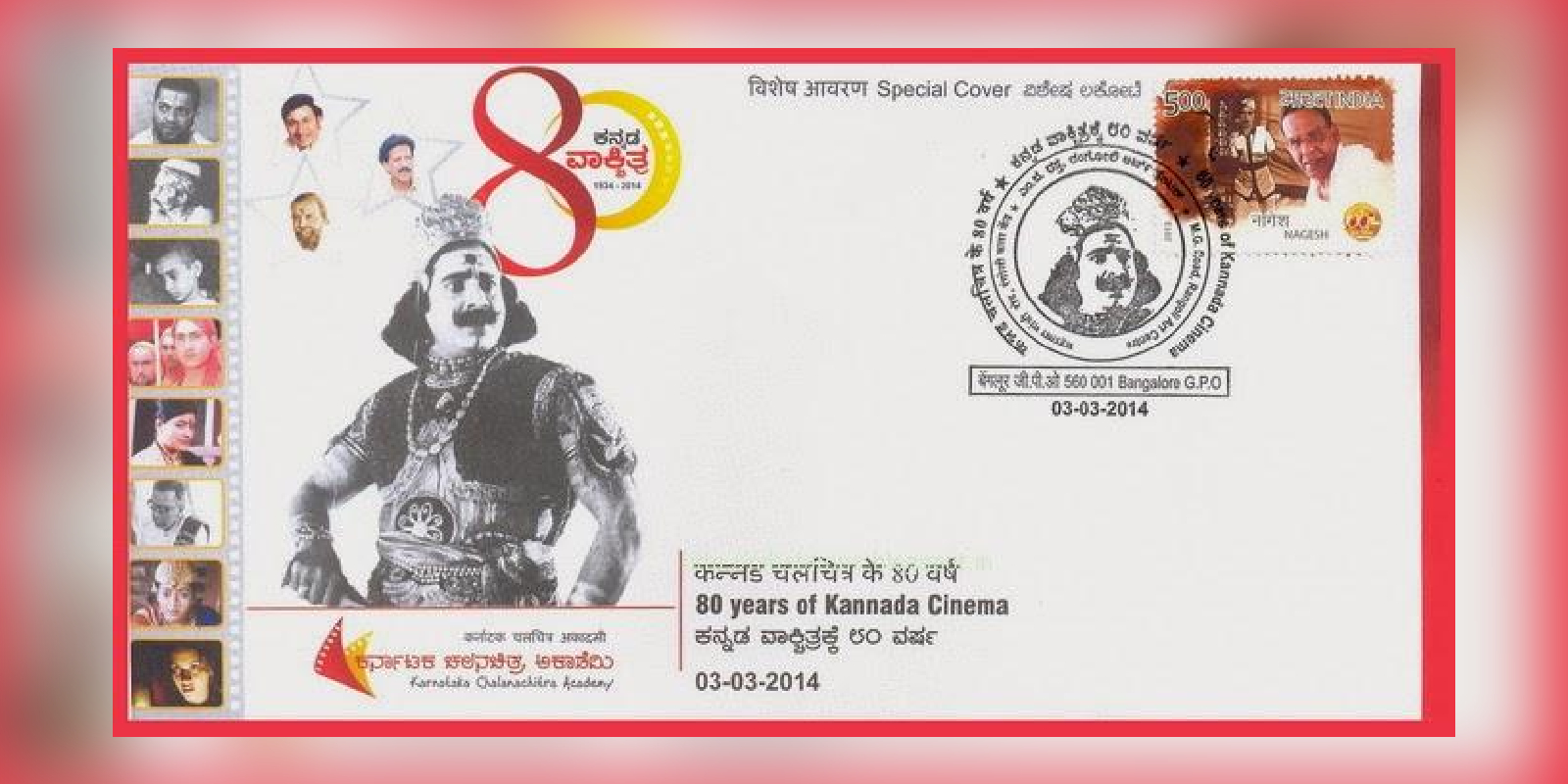From Kannada’s first-ever talkie film 'Sati Sulochana' (1934) to several movies on 'Ramayana', Sandalwood has been celebrating Lord Rama for years. Here's a quick look:

Special cover celebrating 80 years of Kannada Cinema and 'Sati Sulochana'. (Supplied)
As the country celebrates the inauguration of Ram Mandir in Ayodhya, let’s take a quick look at the divine presence of Lord Rama in the Kannada film industry — starting from its first-ever talkie film Sati Sulochana, which dates back to 1934.
Legendary filmmaker Dadasaheb Phalke made India’s first-ever full-length feature film Raja Harishchandra (1913), a silent movie. “Raja Harishchandra” is a mythology recounted in both Ramayana and Mahabharata.
Following its huge commercial success, mythological films became one of the most favourite genres for filmmakers.
They are still considered popular for their takers when presented the right way. Even a slight distortion in presenting such delicate subjects has often faced backlash in the past.
Prabhas’ Adipurush (2023) is a classic example of the same.
Though not a mythology film, the Telugu pan-Indian flick Hanu-Man, a superhero venture with a touch of divinity celebrating Lord Hanuman, has been breaking box-office records.
Here are a few Kannada films that revolve around Lord Sri Rama and Ramayana.
A significant milestone in the Kannada film industry, Sati Sulochana is Sandalwood’s first-ever talkie film.
Released 90 years ago, on 3 March 1934, the film was directed by YV Rao.
It featured the legendary Subbaiah Naidu and Tripuramba in pivotal roles, marking the cinematic debut in the erstwhile Mysore Kingdom.
Chamanlal Doongaji, founder of South India Movietone in 1932, produced this historic film in Bangalore.
Unlike most movies made on Lord Sri Rama, this first-ever talkie Kannada film had a completely different approach.
Sati Sulochana talks about Ramayana, especially the cause of war between Rama and Ravana through the viewpoint of Sulochana —the wife of Ravana’s son Indrajith.
Amidst the battle (“Yuddha Kanda” in Ramayana), Rama’s brother Lakshmana is struck down by Indrajit’s arrow but is later revived by the medicinal herb Sanjeevani.
As Lakshmana avenges Indrajit’s death, Sulochana becomes a widow.
Sati Sulochana captures Ravana’s defeat and Indrajit’s demise through Sulochana’s eyes, culminating in her heart-wrenching decision to commit sati sacrifice due to the unbearable pain of her husband’s loss.
While Subbaiah Naidu portrayed Indrajit, Tripurambha played Sulochana, and R Nagendra Rao as Ravana.
Director YVRao acted as Lakshamana, and DN Murthy Rao as Lord Rama.
YV Rao, who later helmed more Telugu and Tamil films, is the father of senior actor Lakshmi aka Julie Lakshmi.
Being the first-ever Kannada talkie film, Sati Sulochana ran to packed houses in Bangalore for several weeks.
The Karnataka state government recently announced that 3 March will be observed as “Vishwa Kannada Cinema Day”.
Bhookailasa (1958), directed by K Shankar and produced by AV Meiyappan for AVM Productions, has the demon king Ravana in the prime focus.
Starring Kannada thespian Dr Rajkumar as Ravana, Bhookailasa is set against the backdrop of the Gokarna in Karnataka.
Adapted from the Kannada stage play Bhookailasa by Sri Sahitya Samrajya Nataka Mandali of Mysore, AV Meiyappan previously made it into the Telugu film Bhookailas in 1940.
He made it again in 1958 with the same title with both Kannada and Telugu versions being shot simultaneously.
Legendary Telugu actor NT Rama Rao played Ravana in the Telugu version.
Star actors these days take their own time before their movies hit the screens. At the most, their fans can expect one or a maximum of two movies. However, it was quite the opposite in the past.
Kannada thespian Dr Rajkumar has a unique record of releasing 15 films in a calendar year, which he broke again in 1968 with 16 films.
In 1963, Dr Rajkumar did Valmiki and Sri Ramanjaneya Yuddha.
Directed by CS Rao, Valmiki revolves around the life of the author of the holy epic Ramayana.
In Sri Ramanjenaya Yuddha, which marks the 50th movie of Rajkumar, the actor played Rama. The movie is about Rama and Ravana (Uday Kumar), a mythology sequence where a minor disagreement between Lord Anjaneya and his revered deity Lord Rama, escalates into a significant conflict, compelling them to engage in a major war against each other.
The film was later remade in Telugu as Sri Ramanjaneya Yuddham with NTR playing Rama and Arja Janardhana Rao playing Lord Hanuman.
Previously, Rajkumar featured in P G Mohan’s directed film Dashavatara (1960), a mythological film that depicts the ten avatars of Lord Vishnu.
The legendary Kannada actor portrayed four demon kings in the film, including Ravana.
He played the roles of Vijaya, Hiranyakashipu, Shishupala, and Ravana. While the film was shot in Black and White, the climax was made in Eastman colour.
In the 1960 film Bhakte Sabari, directed by Chitrapu Narayana Murthy, senior actor late Panadari Bai played the role of Shabari, an ardent devotee of Lord Rama.
Mahiravana (1957) showcases the son of Ravana, who ruled the lower world. R Nagendra Rao portrayed the protagonist role.
Senior actor B Saroja Devi, who debuted with Mahakavi Kalidasa in 1955, later did Sri Rama Pooje in the year.
Prachanda Ravana (2008) feature the dynamic hero Devaraj as Ravana.

May 03, 2024

May 03, 2024

May 03, 2024

May 03, 2024

May 02, 2024

May 02, 2024